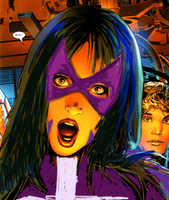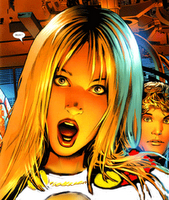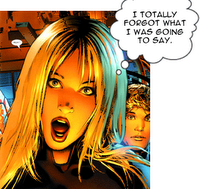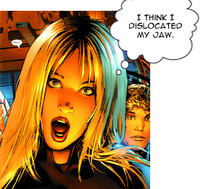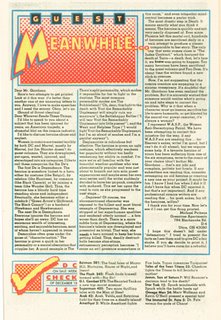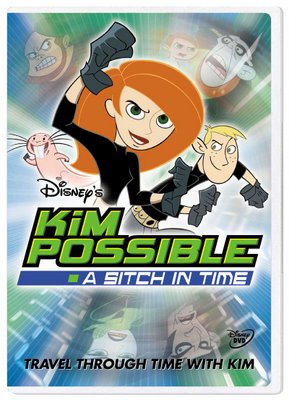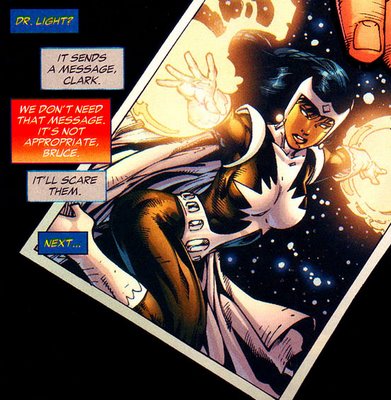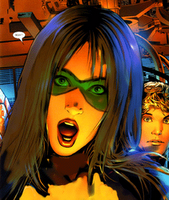 Infinite Crisis Aftermath: The Battle for Blüdhaven
Infinite Crisis Aftermath: The Battle for BlüdhavenIt's easy to spot examples of something when you are particularly sensitive to it, so I try not to overreact when I encounter what seems to be misogyny in comics without checking the context. Like Battle for Blüdhaven has a high bodycount, so it's inevitable that there will be female deaths as well as male deaths, so is it overreacting to see a big bias here?
I expect someone's annotated the whole thing on some corner of the web, but I can't be bothered to hunt it up. Lady Liberty is the only person to die in issue #1 depending on whether you count Silent Majority, who has multiple bodies. Is the Silent Majority who appears in #3 the same person or a different one? Unlike with Lady Liberty, it's impossible to tell.
The six Atomic Knights who appear at the end of #1 include one female member (as far as I can tell). She is the first to die. Only one other knight is defeated (I think). S.H.A.D.E. is introduced and of the eight members only two are female, including a new Lady Liberty. She will die later, in a way that echoes the death of the previous Phantom Lady in Infinite Crisis.
In issue #3 a bunch of Knights are blown up. One is saved for later torture. Guess what, it's the one female member of the group. The only other person tortured by the evil Face is Firebrand, who somehow escapes without a scratch. The female knight is battered and bleeding before the torturer starts on her. She is never seen again. In fact the Knights have a disturbing disregard for the lives of their comrades, but it is particularly noticeable here. Nobody is going to come rescue this damsel in distress.
 It's true, male characters are killed. Major Force kills Major Victory on a whim. Many people of indeterminate sex are beaten up or exploded. But taken over all, given the starting ratio of males to females (about 6:1) it seems kind of odd that more women should be seen dying than men. I'm not even going to get into Black Baron's suicide love slaves.
It's true, male characters are killed. Major Force kills Major Victory on a whim. Many people of indeterminate sex are beaten up or exploded. But taken over all, given the starting ratio of males to females (about 6:1) it seems kind of odd that more women should be seen dying than men. I'm not even going to get into Black Baron's suicide love slaves.Okay, on the odd occasion that Phantom Lady managed to get a line she did come across as the most sane person in the entire story, and I did enjoy the general chaotic lunacy, but Battle for Bludhaven has a real misogynistic streak, and underneath all the fireworks there is barely half a story.
